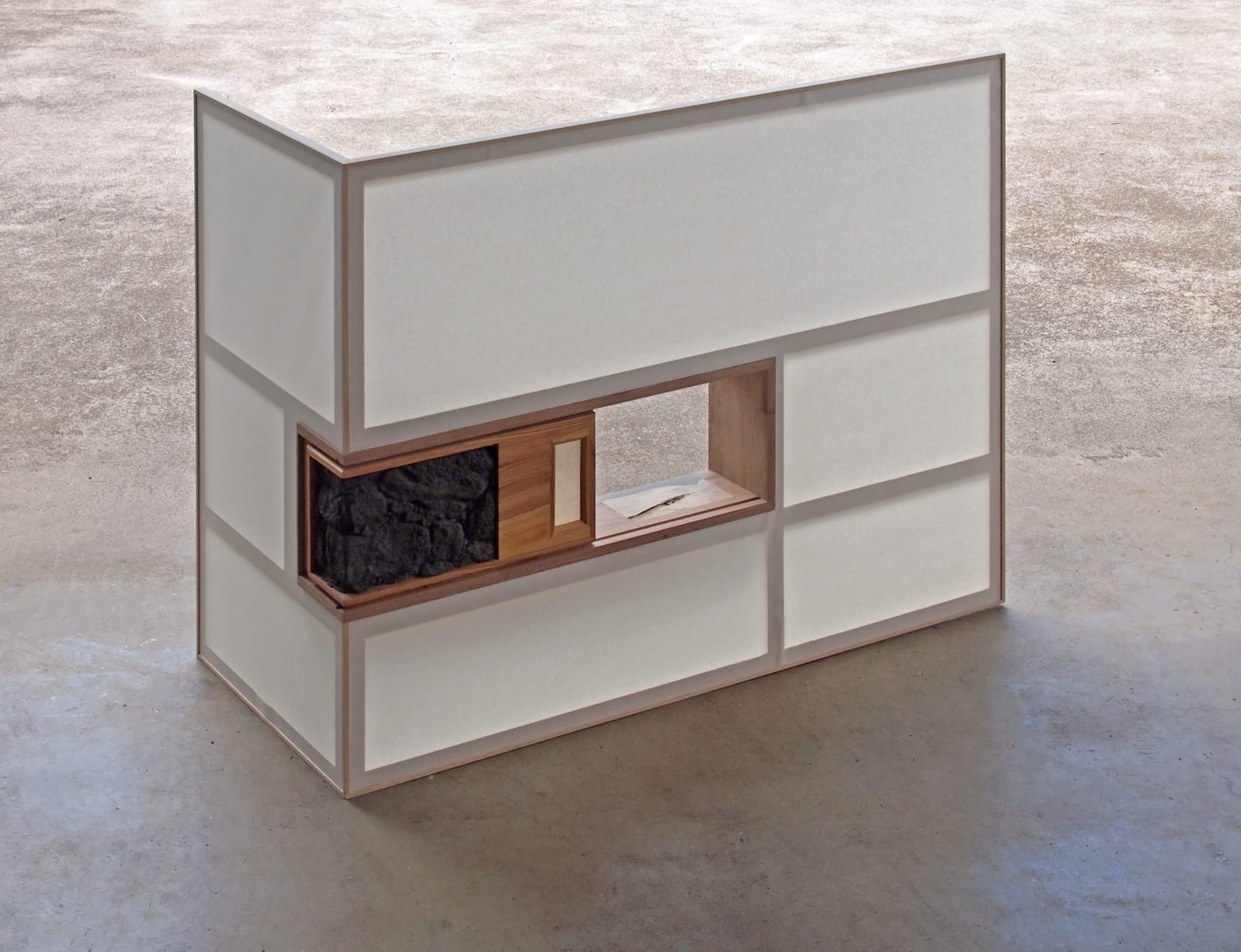Jonathan Yukio Clark American, b. 1987
Untitled (excerpt of a rock wall), 2018
walnut, sugi, maple, hau, tinted hydrocal, washi
37 x 48 1/2 x 20 1/2 in
94 x 123.2 x 52.1 cm
94 x 123.2 x 52.1 cm
JYC010
Further images
Clark’s architectural sculpture explores permeable and temporary dividing elements such as windows, sliding doors, and other translucent partitions that frame, view and connect interiors and exteriors. Light permeates this translucent...
Clark’s architectural sculpture explores permeable and temporary dividing elements such as windows, sliding doors, and other translucent partitions that frame, view and connect interiors and exteriors.
Light permeates this translucent sculpture of Japanese paper mounted over an L-shaped wood frame, reminiscent of traditional Japanese shoji screens. The sliding corner piece features a small window as well as an inlay of Hawaiian lava rocks - a replica cast from the many rock walls built into and around his grandparents’ house. This is particularly inspired by Clark’s Japanese-American grandfather, who built the wall by hand and finished the corners using only stones with naturally occurring 90-degree angles, collected methodically over many years.
Clark incorporates both Japanese and Hawaii-specific woods into his sculpture, with an eye towards the rough edges and burls that are often discarded as imperfections. A large rectangular opening through the sculpture reveals a single piece of variegated hau wood embedded into walnut.
Light permeates this translucent sculpture of Japanese paper mounted over an L-shaped wood frame, reminiscent of traditional Japanese shoji screens. The sliding corner piece features a small window as well as an inlay of Hawaiian lava rocks - a replica cast from the many rock walls built into and around his grandparents’ house. This is particularly inspired by Clark’s Japanese-American grandfather, who built the wall by hand and finished the corners using only stones with naturally occurring 90-degree angles, collected methodically over many years.
Clark incorporates both Japanese and Hawaii-specific woods into his sculpture, with an eye towards the rough edges and burls that are often discarded as imperfections. A large rectangular opening through the sculpture reveals a single piece of variegated hau wood embedded into walnut.









